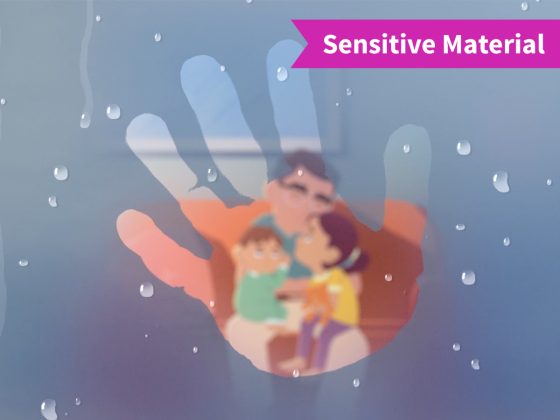
A Child’s Perspective of a Traumatic Experience
This video was created to help us understand reactions to traumatic experiences at different ages, and to highlight the powerful role of caring adults.
This video was created as a visual tool for understanding reactions to traumatic experiences at different ages, and to highlight the powerful role of caring adults. As you watch, notice, consider, and reflect upon your own feelings and reactions. This will help you prepare as you share with parents the responses to trauma at different ages and stages (even babies respond to traumatic experiences)!
This video only shows one type of traumatic experience (domestic violence), but the impact of all traumatic experiences is universal. However, there is good news: A caring adult can step in and change the trajectory. The power is in our hands.
As you watch this video of two children’s different responses, consider these questions: What do you notice that is the same in the children’s responses to the traumatic experience? What is different? How does the grandfather make a difference in the end?
The symptoms of having experienced trauma can be different at every age and for every individual child. Every child’s response is unique. Some children “bounce back” after adversity; others show intense distress. Responses can go beyond immediate reactions to traumatic events and damage the child’s brain and nervous system, as well as overall physical health, creating long-term social, emotional, and physical problems. Trauma affects the whole body and the entire emotional world of the person experiencing it.
It can be very difficult to identify trauma in young children, so it’s important to watch for behavioral changes.
At Any Age
No matter their age, traumatized children may:
- seek or demand more attention,
- show aggression,
- seem withdrawn,
- startle easily,
- have sleep problems,
- have separation anxiety or show fear of certain adults,
- cry for reasons adults can’t figure out,
- exhibit regressive behaviors (such as wetting the bed after being toilet trained),
- show increased irritability, and
- display sadness.
In addition, certain symptoms of trauma can appear at different times during a child’s development.
Birth to 2
Infants and toddlers may:
- have digestive problems and low appetite and weight,
- possess weaker verbal skills and more memory problems than older children, and
- have exaggerated emotional responses (such as screaming or crying).
Ages 3–6
As kids grow, there are often more noticeable cognitive, behavioral, and physiological reactions. Young children may:
- have difficulty focusing in school,
- have delays in cognitive development or demonstrate learning disabilities,
- act out with anger or aggression in social situations or imitate traumatic experiences verbally or physically,
- become anxious, fearful, or avoidant,
- have repeated or intrusive thoughts,
- develop feelings of self-blame, low self-confidence, and feelings of mistrust toward others, impacting their ability to establish friendships,
- have stomachaches and/or headaches, and
- enact elements of the trauma in play, drawing, or speaking.
Sources
“Early Childhood Trauma.” The National Child Traumatic Stress Network. (2010). http://www.nctsn.org/sites/default/files/assets/pdfs/nctsn_earlychildhoodtrauma_08-2010final.pdf

Slow Down & Settle Down
Parents and children can share ways they calm and soothe themselves. This video provides more self-care ideas.
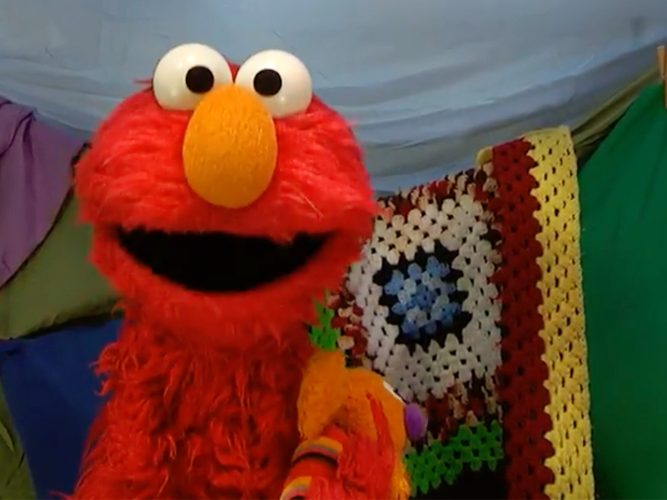
Feeling Safe
In order for healing to begin, it’s critical that kids feel protected and safe.
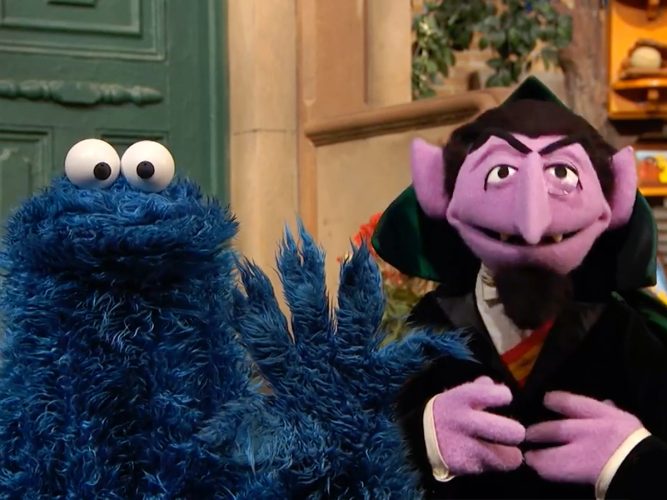
Learning How to Count, Breathe, Relax
Small things can set kids off, but you can teach them a self-soothing breathing exercise to use on their own.
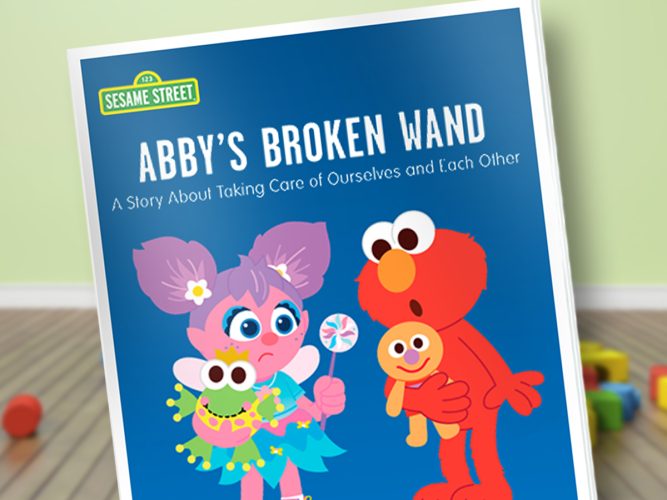
Abby's Broken Wand
A storybook featuring strategies to help children cope with big feelings.

It’s Not Easy Being Green
A song about being ourselves.
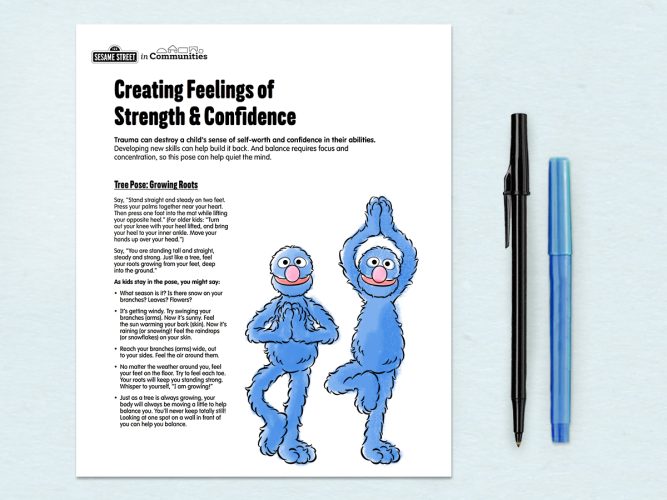
Creating Feelings of Strength and Confidence
A focused movement activity that builds confidence and a sense of groundedness.
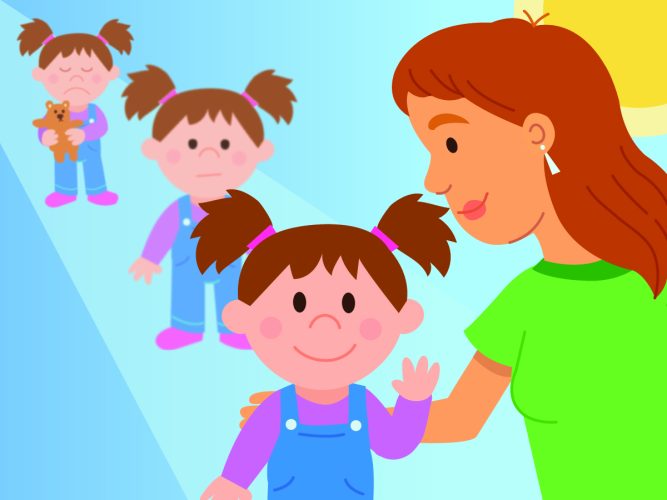
Helping Children Make Meaning After Trauma with Chandra Ghosh Ippen
Learn how young children experience trauma and what can help with Sesame Workshop’s Tara Wright, and clinical psychologist and author Chandra Ghosh Ippen.
